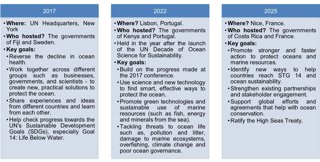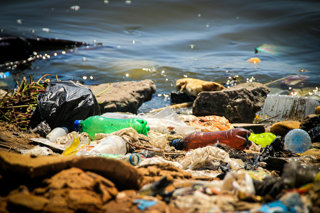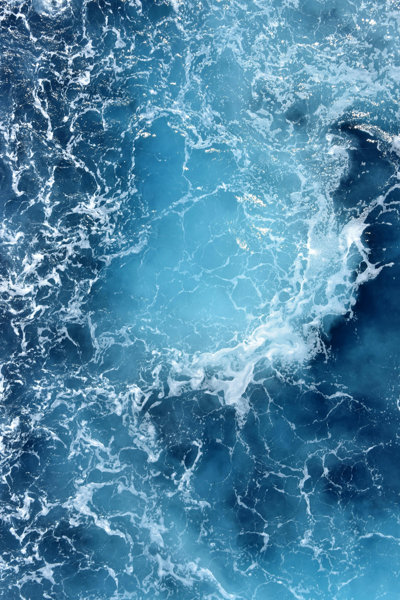Introduction
The United Nations (UN) Ocean Conference took place in Nice, France between 9 and 13 June 2025. The main theme was about speeding up action and getting everyone involved in protecting and using the ocean in a sustainable way.
The conference supported previous work from other ocean conferences to support the Sustainable Development Goal (STG) 14: life below water.
Timeline
The 2025 conference was the third of its type to specifically address the decline in the health of the ocean and has built not only on its origins but recognises that the ocean is a global responsibility.
The figure below summarises the key points from each of the three conferences since 2017.

Developments
As shown in the timeline, each conference has made steps towards protecting more of the ocean through different methods. The 2025 conference sought to make strides in international cooperation in several areas including:
High Seas Treaty
The main aim of the treaty is to protect 30% of international waters by 2030. Before the conference, 27 countries had ratified (signed or given formal consent) to the agreement. This rose to 50 during the conference, with several other countries promising to do so soon.
Marine Protected Areas (MPAs)
More countries pledged to protect parts of their own oceans including the UK which plans to ban bottom trawling in nearly ⅓ of English MPAs. The biggest came from French Polynesia who announced the creation of the world’s largest ever marine protected area in its own waters. The MPA will cover all the country’s exclusive economic zone (EEZ) which is almost 5 million KM2 restricting harmful ocean practices such as deep-sea mining and bottom trawling. Of that, 1.1 million KM2 will be further protected to allow traditional coastal fishing, ecotourism and scientific exploration only.
Improvements in fishing practices
China, the world’s biggest fishing nation have agreed to tackle illegal and unregulated fishing by signing the Port State Measures Agreement. Without the support of China, limiting destructive fishing methods was difficult and fish stocks along with their habitats would be further damaged.
Plastic pollution
It is estimated that there are nearly 200 trillion pieces of plastic in the ocean, and plastic can be found in every corner of the planet. This figure is expected to triple by 2040. Both the plastic itself and the chemicals found within it are harmful to marine animals. At the conference, 97 countries (including the UK) signed a statement agreeing to support a strong global treaty to tackle this issue.

Challenges
With the various commitments made during the conference, 10% of the ocean is now protected. However, being only 5 years away from the High Seas Treaty’s goal of 30%, there is still a lot to be done and many obstacles to overcome.
Increased demand and reduced supply of minerals on the land has meant that many countries have turned to deep-sea mining to extract resources. Deep-sea mining poses significant threats to marine life including destruction of habitats, the release of clouds of sediment containing potentially toxic materials called sediment plumes, and the disruption of ocean processes such as carbon storage by releasing carbon-rich sediments back into the ocean from the sea floor.
Because of these risks, at the conference, over 2,000 scientists called for a pause on deep-sea mining until more research can be done to fully understand the consequences. But despite this, only 37 countries supported the idea of a pause, meaning the future of deep-sea mining remains uncertain.
Fish is an example of another resource people extract from the ocean. Not only do people rely on this as a major food source, but it also provides employment for millions of people around the world.

Around 60 million people worldwide work in the fishing industry, with about 85% of them based in Asia. This means that any changes to fishing methods can have a big impact on people’s jobs, livelihoods, and communities. One of the most harmful fishing methods is bottom trawling. This involves dragging heavy nets across the ocean floor, which scoops up everything in their path. While it catches lots of fish, it also destroys habitats and causes serious damage to the seafloor.

Many countries, including the UK, have taken steps to reduce bottom trawling, especially in Marine Protected Areas (MPAs). However, these efforts are often limited, and in some places, bottom trawling is still allowed even inside MPAs.
There are also concerns about how seriously some countries are following through on their promises. For example, France, one of the countries that hosted the ocean conference, said it would protect 4% of its waters from this form of fishing compared to 0.1% today. But critics have pointed out that these protected zones are in areas where bottom trawling doesn’t really happen anyway - meaning that this has little real impact on reducing the number of bottom trawlers operating in France.
Futures
People around the world are working together more than ever to protect our oceans. Right now, the UN is leading a major project called the ‘Decade of Ocean Science for Sustainability’, which is helping scientists learn more about how important the ocean is for keeping our planet healthy. However, the ocean also holds lots of valuable resources, like fish, oil, and minerals. This means there’s a tricky balance between using these resources and protecting ocean life and habitats. Countries regularly meet at global conferences to talk about this and make sure we’re all moving towards a future that’s fair, sustainable, and good for the planet.
Further reading / watching
Ocean with David Attenborough, 2025 Trailer
Is the ocean ‘having a moment’? This was the UN summit where the world woke up to the decline of the seas. The Guardian 14 June 2025
French Polynesia Just Created The World’s Largest Marine Protected Area. Time, June 10, 2025
United Nations – Sustainable Development Goal 14: Life below water. The Global Goals
2025 UN Ocean Conference 9-13 June 2025
'Glimmer of hope' for marine life at UN Ocean conference. BBC, 13 June 2025
File nameFiles
File type
Size
Download
